Fashion: Loro Piana / Milan
Quality time
As storied Italian brand Loro Piana celebrates its centenary, its CEO, Damien Bertrand, is doubling down on its long-held commitment to luxury.
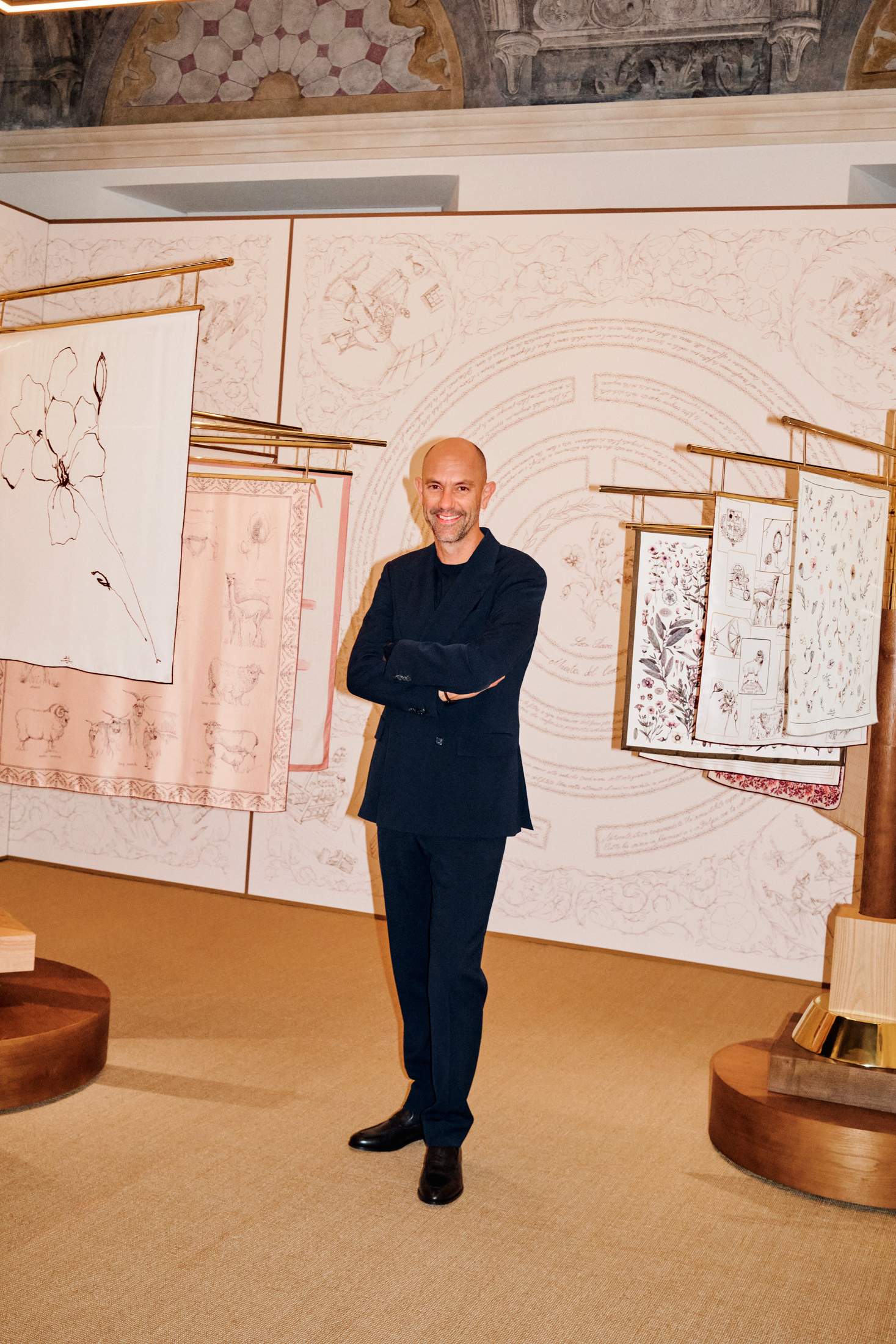
“I’m a man of product,” says Damien Bertrand, the ceo of lvmh-owned luxury house Loro Piana. “Whether it’s haute couture, cosmetics or textiles, I love to feel exceptional quality.” monocle meets Bertrand in his neutral-hued office in central Milan, which has been his base since he took up the post three years ago. It is filled with the kinds of well-crafted products that he is so fond of – Loro Piana’s signature Bale bucket bag, for example, and the men’s sharp Spagna jacket. We also spot the winning entry of this year’s Loro Piana Knit Design Award: a cashmere sweater inspired by knights’ armour, made by two students from the École Duperré in Paris.
“I’m sorry that the winners ended up being French, OK?” he says with a smile. Bertrand grew up in the south of France. He went on to serve as managing director of Christian Dior Couture for five years, after a stint in the US working in the fast-moving world of cosmetics for L’Oréal Group. “Every morning, on my way to work, I would walk past the Loro Piana shop on Madison Avenue and find it so intriguing. I would go in to touch and feel the products, so I developed a sensory knowledge of the brand a long time ago.”
That’s perhaps why Bertrand adjusted so quickly to life in Italy and dived headfirst into the ceo job, asking to visit all of the company’s factories in Piedmont, tour its global boutique network and speak to its clients to deepen his understanding of the brand, which was founded in 1924. “I remember ending up in a client’s dressing room until 02.00, looking at Loro Piana jackets that were more than 25 years old,” he says. “They were absolutely perfect. He knew exactly when he had bought them and how many times he had worn them, which was plenty.”
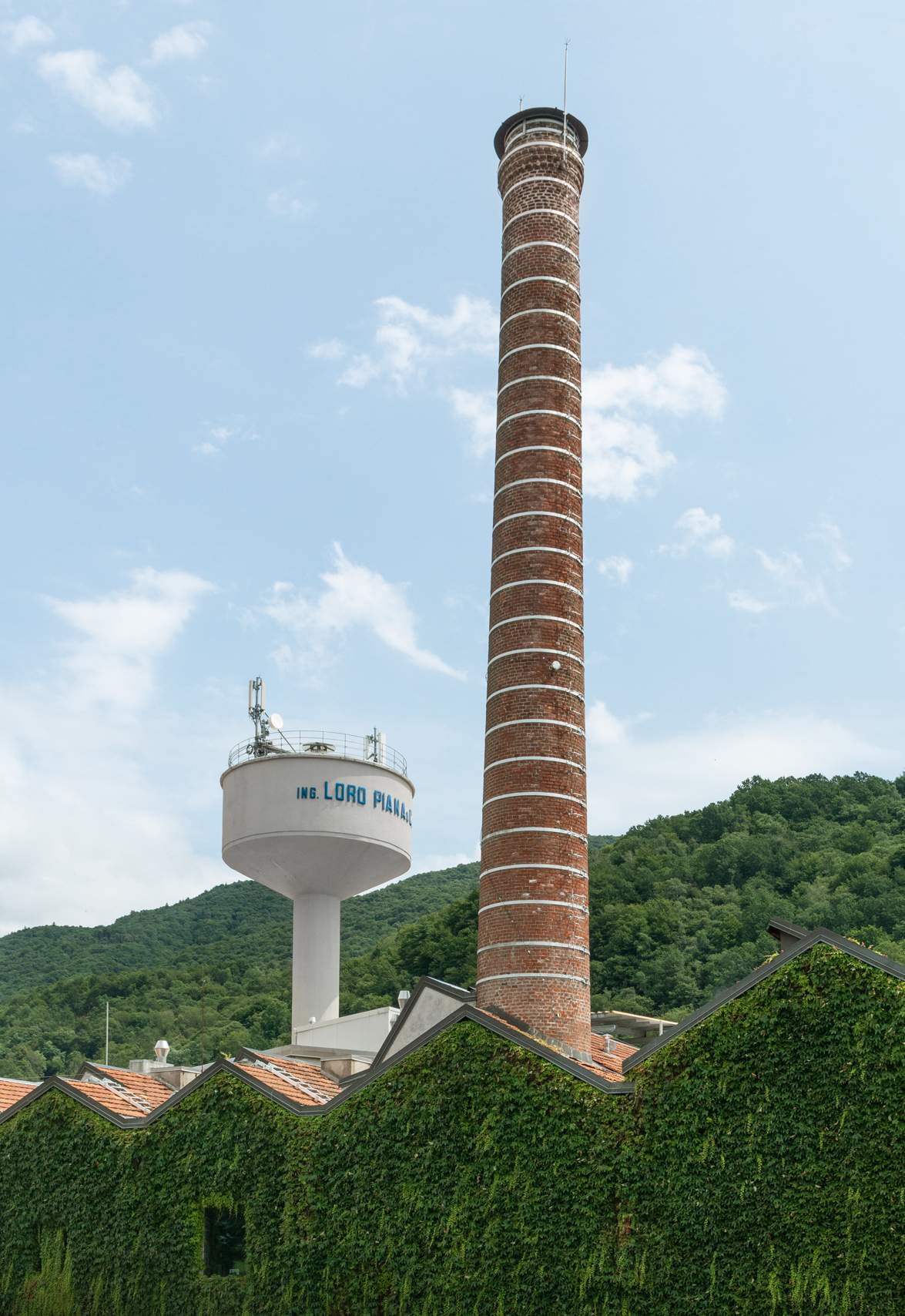
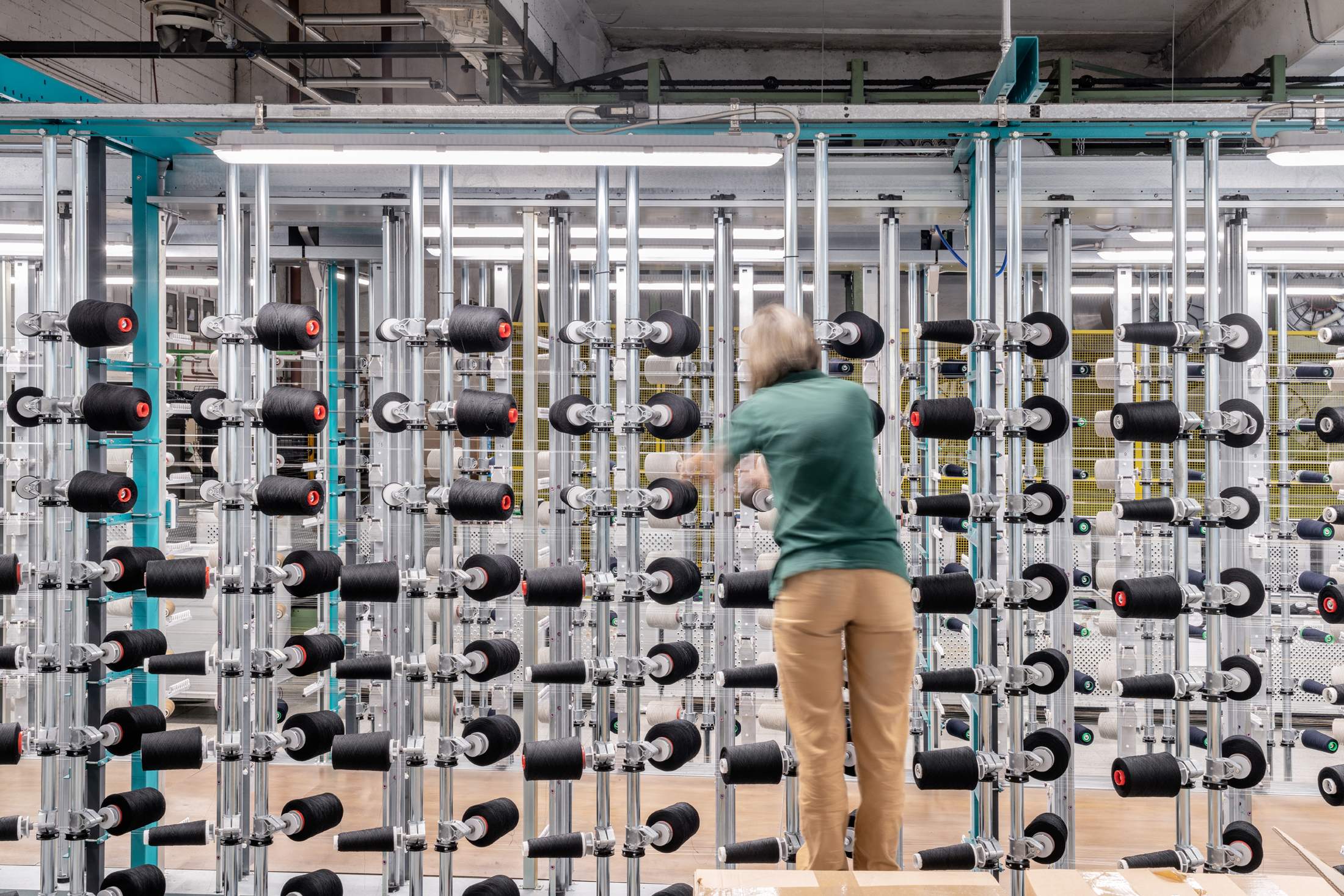
It was clear to Bertrand that he had a gem in his hands but he also sensed that there were “a few things missing”. Loro Piana needed to modernise its campaign imagery, develop stronger womenswear and accessories businesses, and become a bigger part of the fashion zeitgeist. “We set out to create a vision that would position us at the pinnacle of luxury,” he says.
A mere three years later, he is already well on his way to achieving his goal, with several sell-out handbag designs, new jewellery and sunglasses collections and a quickly expanding global clientele that has become “addicted” to Loro Piana’s feeling of quality – whether it’s the supple suede of the label’s boat shoes, the fine cashmere of its polo shirts or the ultra-soft Gift of Kings wool used to craft its sharp Traveller jackets, trench coats, lounge sets and more.
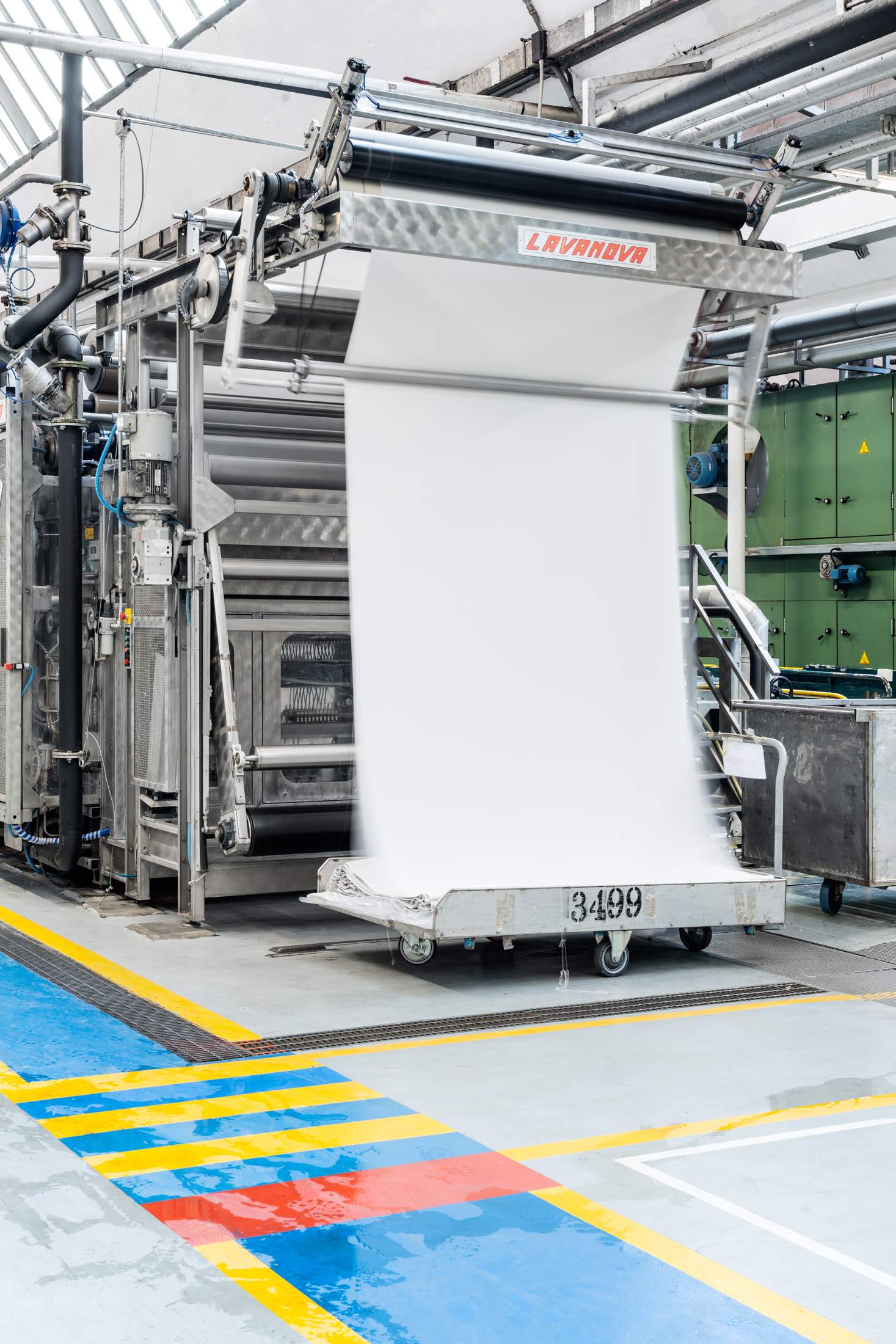

A lot of work has also gone into adding a more contemporary flair. The Loro Piana team has always been obsessed with producing the best textiles but it has now become equally fixated with refining a new signature silhouette: relaxed, perfectly draped and designed to always hug the body of the wearer. “We’re a house of no logos, so how do you create a recognisable silhouette?” asks Bertrand. “We had beautiful products but not this type of modern silhouette. That was the hardest thing to do but it affects everything, including the brand image.”
The ceo points out a photograph from a recent campaign that’s hanging on his wall. It shows a couple lounging in Scotland, wearing matching riding boots and tweed-and-wool ensembles. “It’s more contemporary but, at the same time, it’s very Loro Piana,” says Bertrand. “And you can tell the quality of the boots and the sweater jacket that he wears.” He adds that, since Loro Piana began to present its men’s and women’s collections together and establish a stronger dialogue between the two, the company, which had hitherto largely focused on menswear, has been able to attract a wider female clientele. Textile innovation is another key ingredient in his recipe for success. Under Bertrand’s watch, the business has introduced new textiles such as cash-denim, a mix of cashmere and Japanese denim that is used to create some of the world’s softest, most luxurious jeans, among other denim items. This summer, Loro Piana also debuted pieces featuring graphene, a heat-absorbent material obtained from graphite, mixed with wool to create durable performance wear. “Our clients love spending time outdoors so we created a new capsule,” says Bertrand. “The combination of natural fibres and performance is very rare but I wanted to enhance the brand’s reputation for innovation.” He stresses, however, that such developments require time and can only be rolled out in small quantities.
That isn’t how fashion brands tend to do business today – especially if they are part of a publicly traded company such as lvmh with financial targets to hit every quarter. But the rules are clearly different for Loro Piana, which seeks to position itself at the highest echelons of luxury. “Today many companies use the 101 marketing playbook, where you appoint a famous creative director and then dress a star for the red carpet,” says Bertrand. “But that kind of thing isn’t always aligned with our dna. Loro Piana isn’t Dior and Dior isn’t Loro Piana. The ethos here is about discretion, subtlety and sophistication.”
That’s why Bertrand has made a point of avoiding quick fixes, such as celebrity placements or runway shows, in favour of a longer-term view. “Our clients are connoisseurs,” he says. “There’s that famous saying: ‘If you know, you know.’ Though our brand name isn’t written anywhere, people recognise the quality and details.” All of this comes at a cost: €3,200 for a wool jacket, for example, or €16,000 for a shearling coat. What does he think of those who argue that the price tags are unreasonable? “They are not Loro Piana customers,” says Bertrand, who is perhaps the most knowledgeable customer of all and claims to be able to identify his brand’s cashmere in the dark just by feeling it. “They haven’t experienced the quality to understand it. We’re masters of fibres, so the idea is that you’re buying a piece that will carry you through a long stretch of your life. Some artists even tell me that they can only compose music in Loro Piana clothing, because of the feeling of confidence that it gives them.”
Bertrand applies the same luxury mindset to his management style, taking time to execute projects to perfection, paying close attention to minuscule details and daring to place bold bets. It’s why he hasn’t tried to expand the business’s retail footprint too quickly, despite increased demand across the globe. “What we’re doing instead is making sure that we have our boutiques in the best locations – Rodeo Drive in Los Angeles, for instance, has just reopened,” he says. “If we are offering the crème de la crème of products, we need to offer the crème de la crème of experiences too. I’m not in a hurry. The beauty of my job is that I don’t have to rush to create beautiful things, such as our pop-up in Zermatt. That was a first for us but it became the talk of the town.”
Bertrand’s approach is clearly working. “We’re seeing dynamic growth that’s quite balanced in every region,” he says. Luca Solca, a senior analyst at wealth-management firm Bernstein, tells monocle that Loro Piana has been “one of the best brands in the lvmh group in recent years. It caters perfectly for high-end consumers who are veering towards casual wear, in the most elegant, sophisticated and expensive way possible.”
The increased visibility of the company’s pieces on social media and hit television programmes such as Succession has also played a part in the transformation of the business. This type of publicity often proves to be a double-edged sword, with the buzz dying down as quickly as it was generated and customers moving on. Can Loro Piana sustain the momentum at a time when fashion seems to be preparing for a return to maximalism?
Bertrand is certain that the only way is up. He says that the leather-goods and accessories departments that barely existed three years ago will continue to grow and debut new hits. At the brand’s most recent presentation – at Milan’s Palazzo Belgioioso, where elegant tailoring was paired with pillbox hats, silk scarves and new iterations of the loafer – the ceo’s ambition to offer a head-to-toe Loro Piana look while growing in all accessories categories was clear.
He is also confident that conversations taking place online and the direction of trends won’t affect his brand’s customer base, which has a different set of priorities. “Social media can sometimes create a sort of hyper-visibility all on its own,” says Bertrand. “You can be aware of it but you can’t control it.” He adds that Loro Piana products are limited by their nature and will never suffer from online oversaturation. “We don’t often work with influencers but, if people want to talk about our pieces, I welcome it because it’s interesting. We’re not loud but we don’t need to be silent.” This was the attitude that guided Bertrand’s decision to take over 36 windows at UK department store Harrods from 7 November to 2 January, to ring in the festive season and celebrate the brand’s centenary. This takeover at one of London’s busiest retail destinations is far from quiet; yet, in true Loro Piana fashion, the designs of the windows are elegant, logo-free and utterly charming. The idea was to create a “workshop of wonders” and tell the story of the company through wooden figurines, as though the pages of a children’s storybook had come to life. One window, for instance, showcases the journey of vicuña wool from animals to atelier and then finished product.
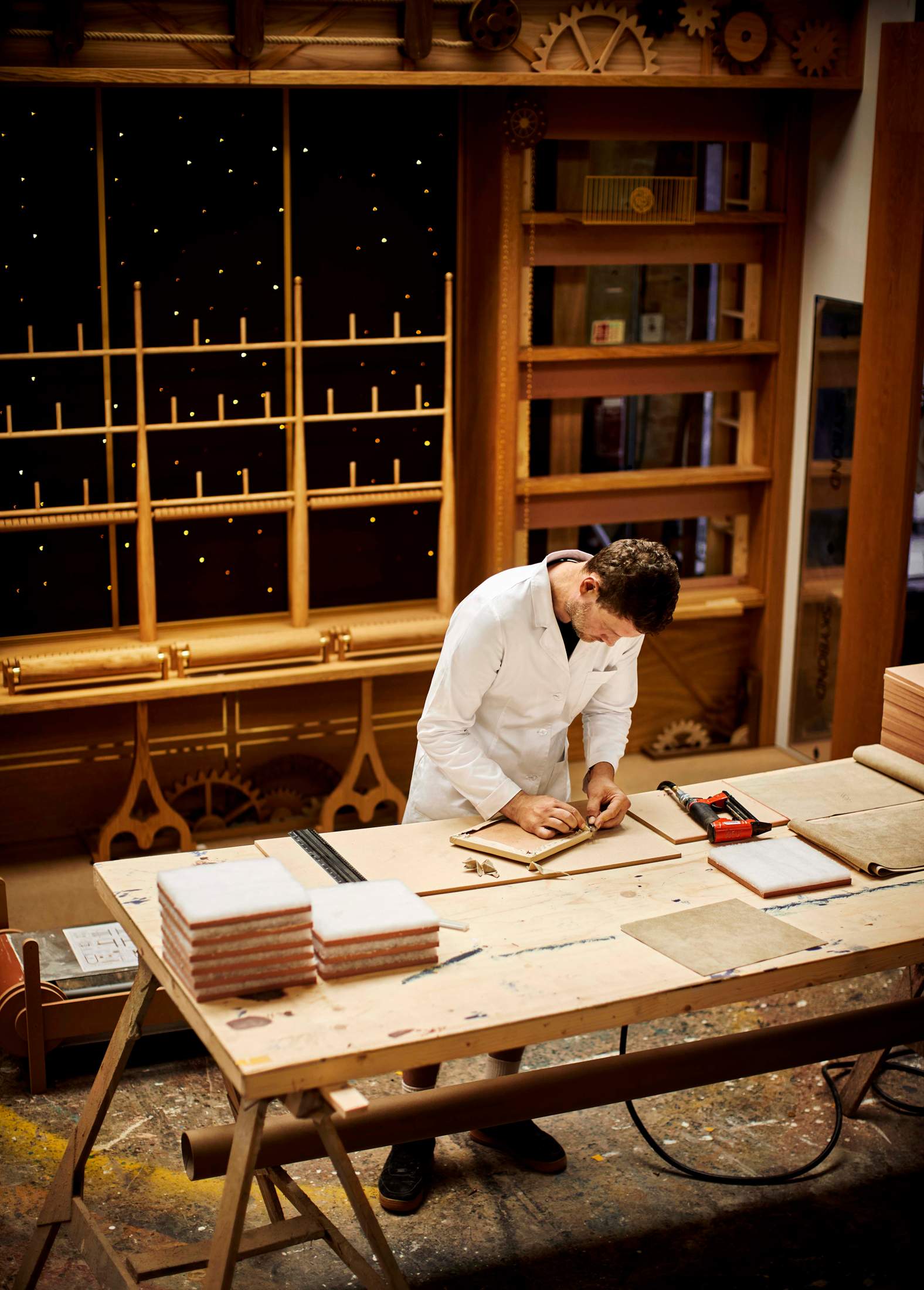

The brand’s 100-year-old story is told through figurines
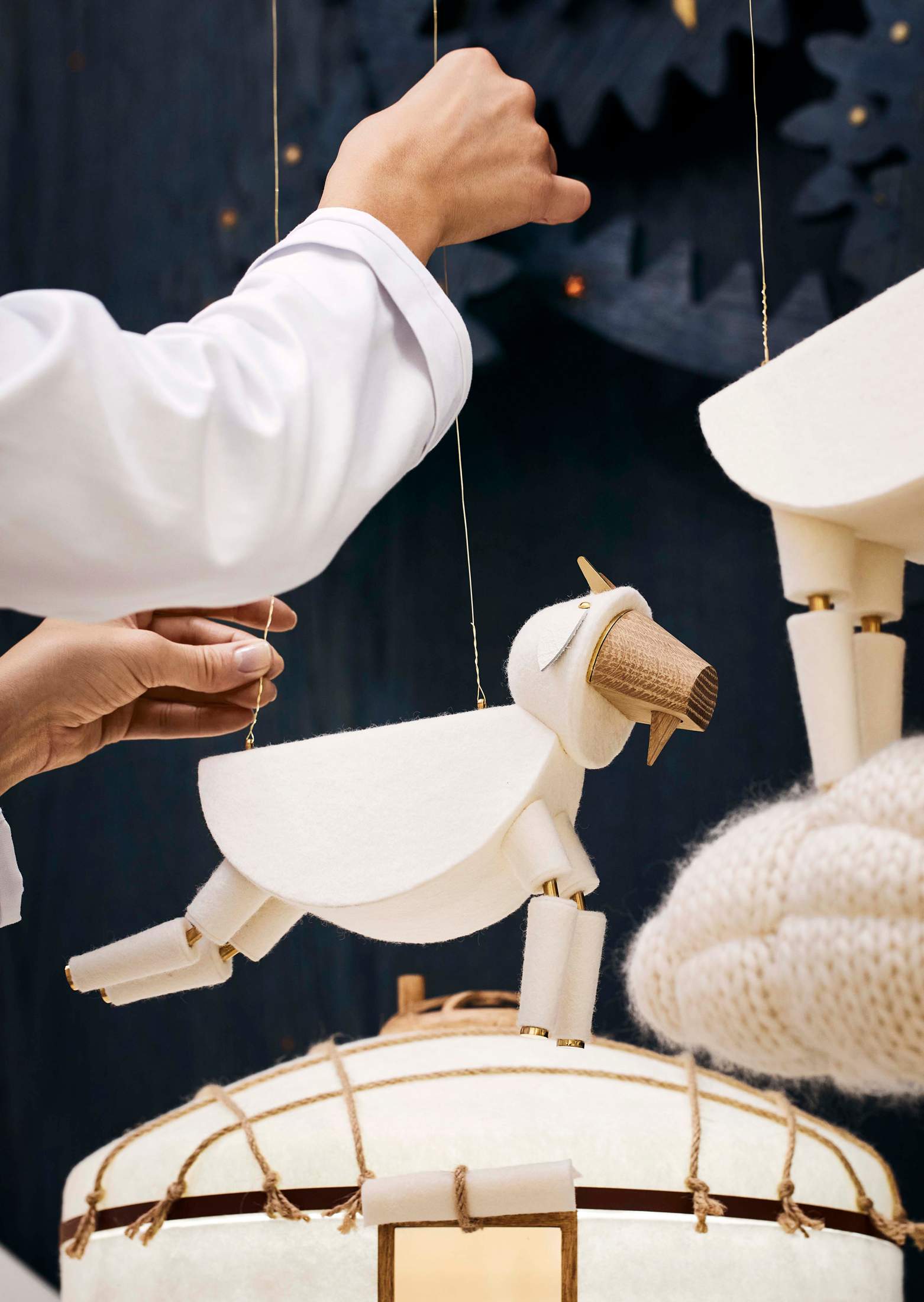
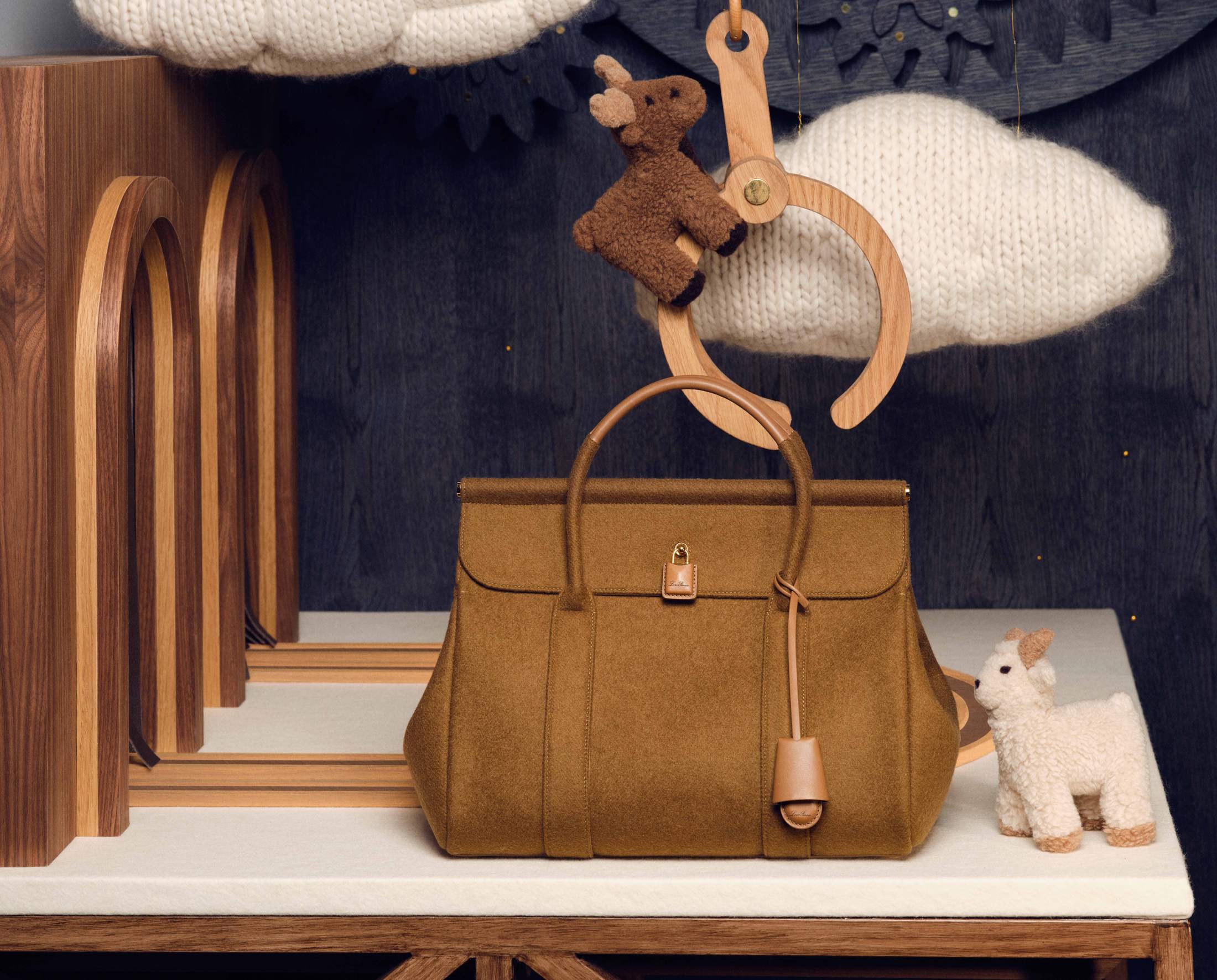
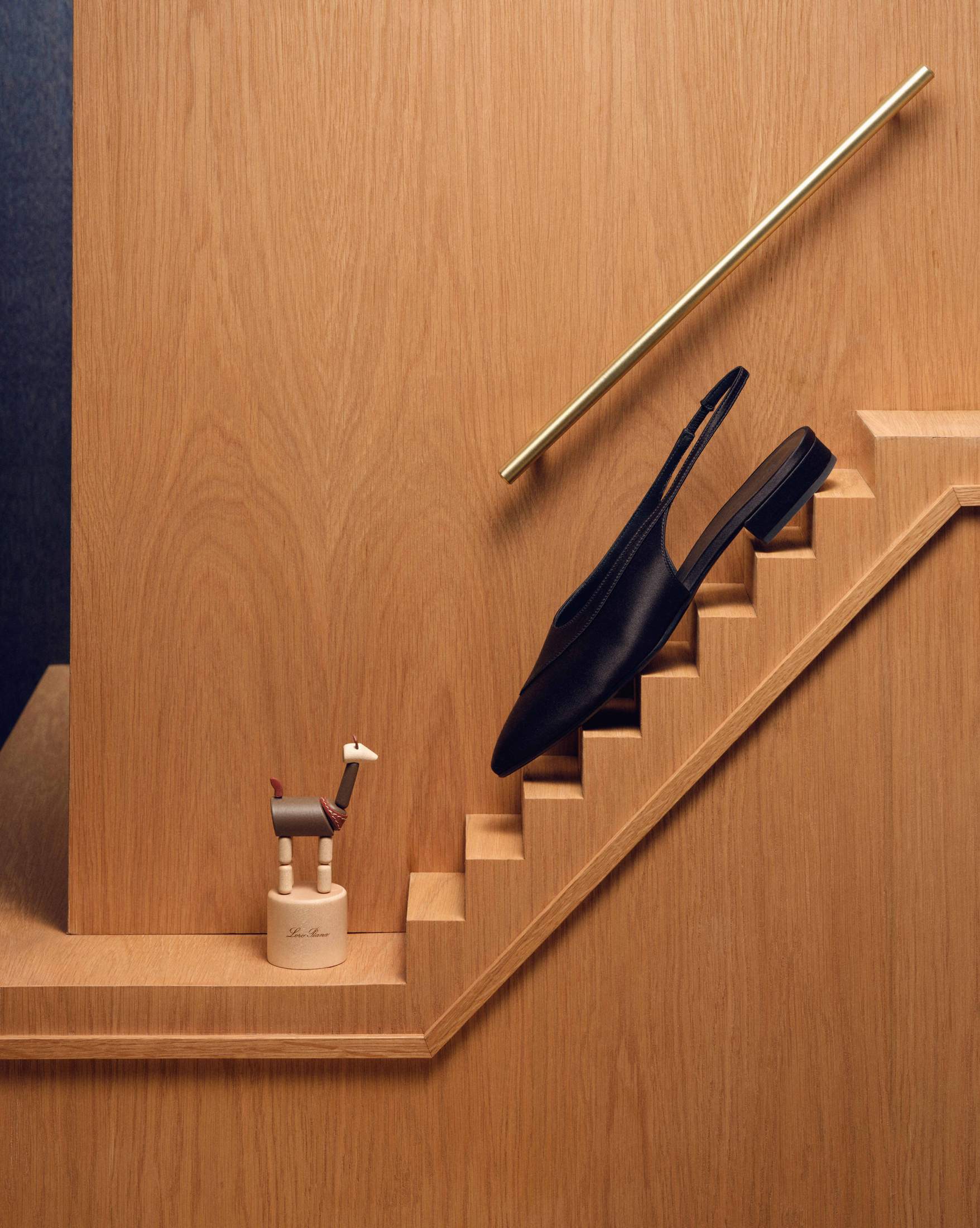
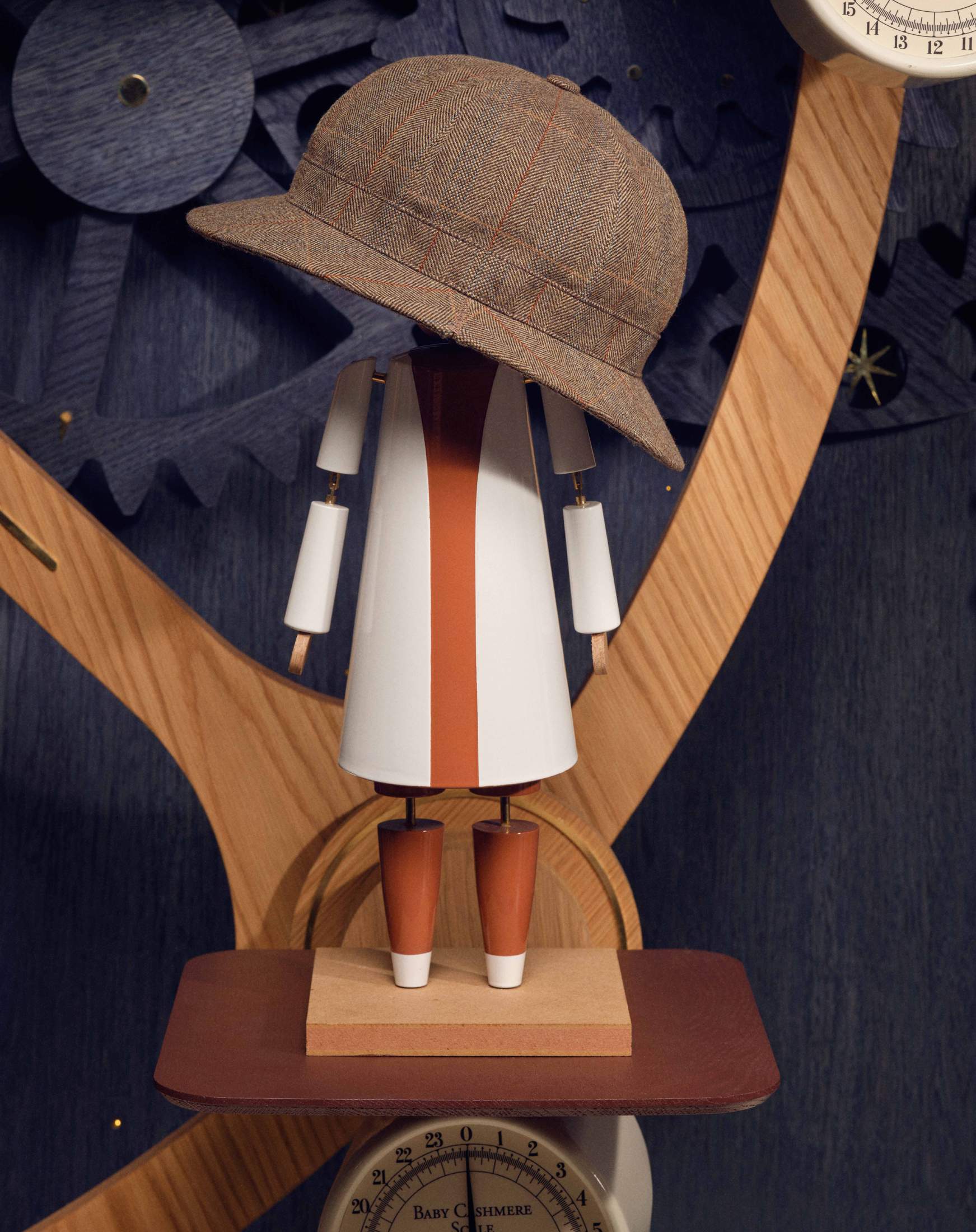
“Loro Piana’s discreet, logo-free approach speaks to a clientele that values substance over spectacle,” says Simon Longland, fashion buying director at Harrods, who praises the label’s sense of precision. “It captures the magic of the season without relying on overt branding. The success of its accessories lines has set new standards in the industry and its influence on contemporary footwear design is evident. And these categories are just the beginning. There is substantial potential for continued growth, as the brand deepens its offering in soft accessories and other luxury lifestyle products.”
The concept of an open book presented across the Harrods windows is particularly poignant; it is perhaps a subtle statement of Loro Piana’s confidence in its manufacturing practices, after allegations surfaced earlier this year that the company was sourcing vicuña wool for its garments from unfairly remunerated indigenous workers in Peru. The brand has since responded with statements of fair payments – between $300 (€277) and $400 (€370) per kilogramme of vicuña wool, according to a statement – and stressed its commitment to working in Peru, not only to refute the accusations but to honour the 30-year relationships that it has built with the country’s farmers.
“Our aim is to limit our environmental impact and safeguard the future of the next generation,” says Bertrand. “We have been doing this for many years but our efforts are intensifying. For instance, in Aqueripa, we created water reserves in 2018 to protect the animals and help the communities [which were suffering from droughts]. At a time when people are spending more and more time on their phones and might think that the world is virtual, we want to emphasise the beauty of the artisan world.”
It has been 100 years since Loro Piana started as a family business of wool traders and merchants. Both the brand and the fashion industry have completely transformed since then, with Loro Piana now owned by the world’s biggest luxury conglomerate and evolving well beyond its original textile business. Yet, for Bertrand, the label’s core values of family, quality and sophistication remain very much intact. The Arnaults, the powerful French family behind lvmh, have been long-time customers and fans, so they respect the company’s founding ethos and Bertrand’s signature strategy of evolution versus revolution.
That’s why, for the year ahead, Bertrand is focusing on “consolidating the vision”, rather than trying to keep up with market changes. “That is a part of luxury: knowing where you want to go and not looking left and right,” he says.
In many ways, Bertrand’s philosophy serves as a reminder of what luxury fashion should stand for at a time when too much attention is being paid to logos, seasonal hits and items that serve as status symbols. “Luxury is something with soul that you buy for yourself, not for others,” he says. “It’s like the private dinner that we hosted in Lake Como and didn’t communicate. Or, as Sergio Loro Piana would have said with his signature humour, we really should be talking more about quality and less about luxury.” — loropiana.com


